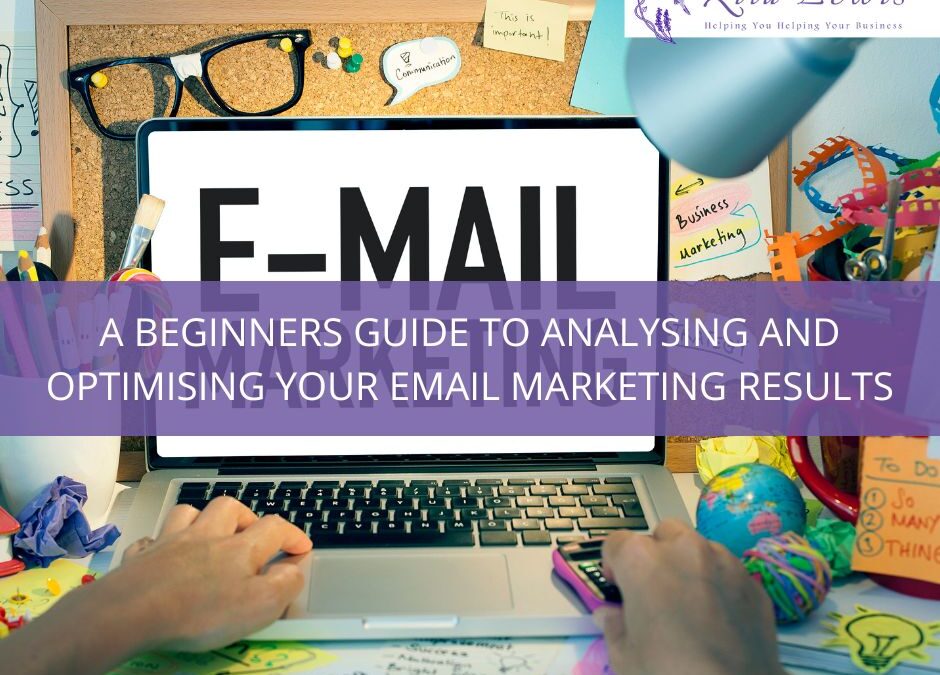A Beginners Guide to Analysing and Optimising Your Email Marketing Results
If you’re running an email marketing campaign and sending regular newsletters to your subscribers, you’ll want to know whether it’s working or not. By using analytics tools, you can get a better understanding of how your campaigns are performing and make data-driven decisions to improve your email marketing strategy.
In this blog post, we’ll discuss the importance of analysing your email marketing results, the benefits of using analytics tools and some key metrics to track.
Email marketing analytics and what they tell us
To get started, you’ll need to head into your email marketing software dashboard and take a look at the ‘analytics’ section, there you should find information for the following key metrics:
Open rate: This is the percentage of people who opened your emails. A high open rate is a good sign that your subject lines and sender name are effective at getting people to open your emails and when you want to turn subscribers into potential customers – this is important!
Click-through rate: This is the percentage of recipients who clicked on a link in your email. A high click-through rate indicates that your email content is engaging and relevant to your audience.
Conversion rate: This is the percentage of people who complete a desired action after receiving your email. This could be reading a blog, buying a product, contacting you about a service you offer, etc. A high conversion rate is a good sign that your email newsletter is effective at getting the results you’re looking for.
Bounce rate: This is the percentage of emails that could not be delivered to the intended recipient. A high bounce rate could indicate a problem with your email list or that you are sending emails to invalid or inactive email addresses. It’s a good idea to prune your email list for inactive subscribers on a quarterly basis and the bounce rate can help you determine which subscribers to remove.
A high bounce rate could also mean that your emails are landing in the spam folder and aren’t getting seen by your subscribers because your newsletters aren’t getting through the spam filters.
Unsubscribe rate: This is the percentage of people who opted out of your emails. A high unsubscribe rate could indicate that your emails are not relevant or that you are sending too many emails.
If you want more in-depth information, you can set up analytics for your email marketing campaigns using Google Analytics, Matomo, or other software. You’ll need to set up goals and track events in your preferred analytics tool (some email software is integrated with Google Analytics to make things easier for you).
Email marketing goals are specific actions that you want your users to take, such as making a purchase or signing up for product launch information. You can set up goals in your analytics tool and track when users complete these actions – so you can see at a glance how successful your email newsletter has been at getting the result you wanted.
Data isn’t everybody’s cup of tea but it is important to have at least a basic understanding of how well your email marketing campaigns are performing with your target audience, so you can tweak things for better results in the future.
Analysing email campaign performance for better results
Once you have set up analytics for your email marketing campaigns and have tracked key metrics such as open rates, click-through rates, and conversion rates, you can start analysing your campaign performance. This can help you understand what’s working and what’s not so you can make data-driven decisions to improve your campaigns.
One way to analyse your email campaign performance is to compare results across different campaigns to see which newsletters have achieved better results for your email marketing goals. This can help you identify trends and patterns in the data, for example, you might find that emails with a certain subject line have a higher open rate, or that emails with a specific call to action have a higher conversion rate. Using this information can help inform your future campaigns, so you can get better results for your efforts.
Another way to analyse your email campaign performance is to identify patterns and trends in the data. This can help you understand what factors are driving engagement and conversion and make data-driven decisions to optimise your campaigns. For example, you might find that emails sent on a certain day of the week have a higher open rate, or that emails with high-quality content rather than promotions have a higher conversion rate.
Advanced email marketing analytics techniques to consider using with your newsletters
There are several advanced analytics techniques that you can use to get even more insights into your email marketing campaigns and optimise their performance. These techniques can help you identify the elements that are most effective at driving engagement and conversion.
One technique is segmentation analysis, which involves segmenting your email list and analysing the performance of different segments. This can help you understand which groups of people are most likely to engage with your emails and can enable you to tailor your campaigns to better meet their needs and interests.
You might segment subscribers according to which lead magnet they signed up for, which service you provide to them, or which country they live in – how you choose to split these groups is up to you but it should make sense for your audience and your business.
Another advanced technique is A/B testing, which involves sending different versions of your emails to different groups of people and comparing the results. This can help you determine which elements (such as subject lines, content, or calls to action) are most effective at driving engagement. So, you may create two different subject lines, A and B, to test which one performs better than the other.
Multivariate testing is another tactic that involves testing multiple variables at the same time to see which combination of elements is most effective – so subject line and time of day it’s sent to subscribers, for example.
By using these advanced analytics techniques, you can get a deeper understanding of your email marketing newsletters and make data-driven decisions to optimise them. If you need assistance with creating a segmented list, setting up or understanding these metrics, or anything else related to your future campaigns and email newsletters, why not get in touch to discover how I can help?
Analysing your email marketing efforts with analytics tools is essential for understanding what’s working and what’s not in your campaigns. By tracking key factors such as open rates, click-through rates, and conversion rates, you can get a better understanding of how your campaigns are performing and make data-driven decisions to improve them.

